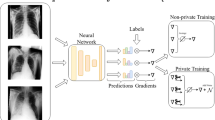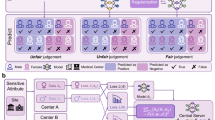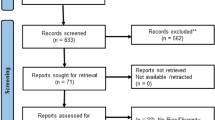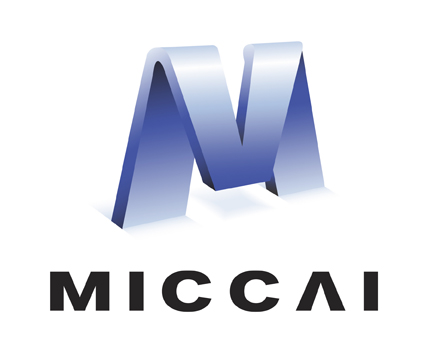Abstract
Intravenous (IV) contrast agents are an established medical tool to enhance the visibility of certain structures. However, their application substantially changes the appearance of Computed Tomography (CT) images, which - if unknown - can significantly deteriorate the diagnostic performance of neural networks. Artificial Intelligence (AI) can help to detect IV contrast, reducing the need for labour-intensive and error-prone manual labeling. However, we demonstrate that automated contrast detection can lead to discrimination against demographic subgroups. Moreover, it has been shown repeatedly that AI models can leak private training data. In this work, we analyse the fairness of conventional and privacy-preserving AI models during the detection of IV contrast on CT images. Specifically, we present models which are substantially fairer compared to a previously published baseline. For better comparability, we extend existing metrics to quantify the fairness of a model on a protected attribute in a single value. We provide a model, fulfilling a strict Differential Privacy protection of \((\varepsilon , \delta ) = (8, 2.8\cdot 10^{-3})\), which with an accuracy of \(97.42\%\) performs \(5\%\)-points better than the baseline. Additionally, while confirming prior works, that strict privacy preservation increases the discrimination against underrepresented subgroups, the proposed model is fairer than the baseline over all metrics considering race and sex as protected attributes, which extends to age for a more relaxed privacy guarantee.
P. Kaess and A. Ziller—Equal contribution.
Access this chapter
Tax calculation will be finalised at checkout
Purchases are for personal use only
Similar content being viewed by others
References
Abadi, M., et al.: Deep learning with differential privacy. In: Proceedings of the 2016 ACM SIGSAC Conference on Computer and Communications Security, pp. 308–318. ACM (2016). https://doi.org/10.1145/2976749.2978318
Best, T.D., et al.: Multilevel body composition analysis on chest computed tomography predicts hospital length of stay and complications after lobectomy for lung cancer: a multicenter study. Ann. Surg. 275(5), e708–e715 (2022). https://doi.org/10.1097/SLA.0000000000004040. epub 2020 Jul 8 PMID: 32773626
Boenisch, F., Dziedzic, A., Schuster, R., Shamsabadi, A.S., Shumailov, I., Papernot, N.: When the curious abandon honesty: federated learning is not private. In: 2023 IEEE 8th European Symposium on Security and Privacy (EuroS &P), pp. 175–199. IEEE (2023)
Buzaglo, G., et al.: Deconstructing data reconstruction: multiclass, weight decay and general losses. In: Thirty-seventh Conference on Neural Information Processing Systems (2023)
Calders, T., Verwer, S.: Three naive Bayes approaches for discrimination-free classification. Data Min. Knowl. Disc. 21(2), 277–292 (2010). https://doi.org/10.1007/s10618-010-0190-x
Carlini, N., et al.: Extracting training data from diffusion models. In: 32nd USENIX Security Symposium (USENIX Security 23), pp. 5253–5270 (2023)
Chicco, D., Jurman, G.: The advantages of the Matthews correlation coefficient (MCC) over F1 score and accuracy in binary classification evaluation. BMC Genomics 21, 1–13 (2020)
Cohen, A., Nissim, K.: Towards formalizing the GDPR’s notion of singling out. Proc. Natl. Acad. Sci. 117(15), 8344–8352 (2020)
Cummings, R., Gupta, V., Kimpara, D., Morgenstern, J.: On the compatibility of privacy and fairness, pp. 309-315. UMAP’19 Adjunct, Association for Computing Machinery, New York, NY, USA (2019). https://doi.org/10.1145/3314183.3323847
Dong, J., Roth, A., Su, W.J.: Gaussian differential privacy. J. R. Stat. Soc. Ser. B Stat Methodol. 84(1), 3–37 (2022)
Dwork, C., Hardt, M., Pitassi, T., Reingold, O., Zemel, R.: Fairness through awareness. In: Proceedings of the 3rd Innovations in Theoretical Computer Science Conference, pp. 214–226 (2012)
Farrand, T., Mireshghallah, F., Singh, S., Trask, A.: Neither private nor fair: impact of data imbalance on utility and fairness in differential privacy (2020)
Feng, S., Tramèr, F.: Privacy backdoors: stealing data with corrupted pretrained models. In: International Conference on Machine Learning. PMLR (2024)
Fioretto, F., Tran, C., Hentenryck, P.V.: Decision making with differential privacy under a fairness lens. In: International Joint Conference on Artificial Intelligence (2021). https://api.semanticscholar.org/CorpusID:234742410
Fowl, L., Geiping, J., Czaja, W., Goldblum, M., Goldstein, T.: Robbing the fed: directly obtaining private data in federated learning with modified models. In: Tenth International Conference on Learning Representations (2022)
Güld, M., et al.: Quality of DICOM header information for image categorization. In: Proceedings of SPIE - The International Society for Optical Engineering, vol. 4685 (2002). https://doi.org/10.1117/12.467017
Haim, N., Vardi, G., Yehudai, G., Shamir, O., Irani, M.: Reconstructing training data from trained neural networks. Adv. Neural. Inf. Process. Syst. 35, 22911–22924 (2022)
Hardt, M., Price, E., Srebro, N.: Equality of opportunity in supervised learning. Adv. Neural Inf. Process. Syst. 29, 3315–3323 (2016)
Hayes, J., Mahloujifar, S., Balle, B.: Bounding training data reconstruction in DP-SGD. In: Thirty-seventh Conference on Neural Information Processing Systems (2023)
Jobin, A., Ienca, M., Vayena, E.: The global landscape of AI ethics guidelines. Nat. Mach. Intell. 1(9), 389–399 (2019)
Klause, H., Ziller, A., Rueckert, D., Hammernik, K., Kaissis, G.: Differentially private training of residual networks with scale normalisation. In: Theory and Practice of Differential Privacy Workshop, ICML (2022)
Lartaud, P.J., Rouchaud, A., Rouet, j.m., Nempont, O., Boussel, L.: Spectral CT Based Training Dataset Generation and Augmentation for Conventional CT Vascular Segmentation, pp. 768–775 (10 2019). https://doi.org/10.1007/978-3-030-32245-8_85
Massachusetts life sciences center: computational resources and services. https://www.masslifesciences.com/
Matthews, B.W.: Comparison of the predicted and observed secondary structure of t4 phage lysozyme. Biochim et Biophys. Acta (BBA)-Protein Structure 405(2), 442–451 (1975)
Nasr, M., Songi, S., Thakurta, A., Papernot, N., Carlini, N.: Adversary instantiation: lower bounds for differentially private machine learning. In: 2021 IEEE Symposium on security and privacy (SP), pp. 866–882. IEEE (2021)
Sanyal, A., Hu, Y., Yang, F.: How unfair is private learning? In: Cussens, J., Zhang, K. (eds.) Proceedings of the Thirty-Eighth Conference on Uncertainty in Artificial Intelligence. Proceedings of Machine Learning Research, vol. 180, pp. 1738–1748. PMLR (8 2022). https://proceedings.mlr.press/v180/sanyal22a.html
Seyyed-Kalantari, L., Zhang, H., McDermott, M.B., Chen, I.Y., Ghassemi, M.: Underdiagnosis bias of artificial intelligence algorithms applied to chest radiographs in under-served patient populations. Nat. Med. 27(12), 2176–2182 (2021)
Sofka, M., et al.: Automatic contrast phase estimation in CT volumes. In: Fichtinger, G., Martel, A., Peters, T. (eds.) Medical Image Computing and Computer-Assisted Intervention – MICCAI 2011, pp. 166–174. Springer Berlin Heidelberg, Berlin, Heidelberg (2011). https://doi.org/10.1007/978-3-642-23626-6_21
Tayebi Arasteh, S., et al.: Preserving fairness and diagnostic accuracy in private large-scale ai models for medical imaging. Commun. Med. 4(1) (Mar 2024). https://doi.org/10.1038/s43856-024-00462-6. http://dx.doi.org/10.1038/s43856-024-00462-6
Ye, Z et al.: Deep learning-based detection of intravenous contrast enhancement on CT scans. Radiol. Artif. Intell. 4(3), e210285 (2022). https://doi.org/10.1148/ryai.210285
Ziller, A., et al.: Reconciling privacy and accuracy in AI for medical imaging. Nat. Mach. Intell. 1–11 (2024)
Acknowledgments
This work was supported by the German Ministry of Education and Research (BMBF) under grant number 01ZZ2316C (PrivateAIM). All models were trained using computational resources and services provided by the Massachusetts Life Sciences Center [23].
Author information
Authors and Affiliations
Corresponding authors
Editor information
Editors and Affiliations
Ethics declarations
Disclosure of Interests
The authors declare no competing interests.
Rights and permissions
Copyright information
© 2025 The Author(s), under exclusive license to Springer Nature Switzerland AG
About this paper
Cite this paper
Kaess, P., Ziller, A., Mantz, L., Rueckert, D., Fintelmann, F.J., Kaissis, G. (2025). Fair and Private CT Contrast Agent Detection. In: Puyol-Antón, E., et al. Ethics and Fairness in Medical Imaging. FAIMI EPIMI 2024 2024. Lecture Notes in Computer Science, vol 15198. Springer, Cham. https://doi.org/10.1007/978-3-031-72787-0_4
Download citation
DOI: https://doi.org/10.1007/978-3-031-72787-0_4
Published:
Publisher Name: Springer, Cham
Print ISBN: 978-3-031-72786-3
Online ISBN: 978-3-031-72787-0
eBook Packages: Computer ScienceComputer Science (R0)





